Applications
Porous media flow simulations
Two phase flow displacement in a shallow-water carbonate deposit

In this numerical experiment a reservoir carbonate clinoforms on the island of Bonaire consisting of bioclastic (yellow) and rhodolitic (orange) limestone, partly dolomitised (red) is considered. The video shows the two phase flow displacement when injecting from one end and producing from the other end. For more information see
The effects of dolomite geobodies within carbonate clinoforms on fluid flow and connectivity: Insights from an outcrop analogue on Bonaire, The Netherlands (South Caribbean)
Geological description: Mid-Miocene progradational platform carbonates of the Seroe Domi Formation. At the type locale in Seru Grandi, these form a succession of shallow-water carbonate deposits that are exposed in a terrace erosional morphology, offlapping a topographically complex volcanic basement. The progradational clinoforms composed of up to 70% calcareous coralline red algae with minor coral fragments, large benthic foraminifera, echinoids, rare bivalves and subordinate volcanic lithic clasts. Individual clinoform beds exhibit lateral changes in facies, with the upslope section consisting predominantly of encrusting red algae and rhodolite facies, grading downslope over a distance of 30-40 m into a bioclastic facies. These two facies are notable for the lack of significant reef-building corals, which are absent from many outcrops, and where present, occur only rarely. All facies have been dolomitized to varying degrees, ranging from undolomitized to completely dolomitized.
Geothermal reservoir well location optimisation
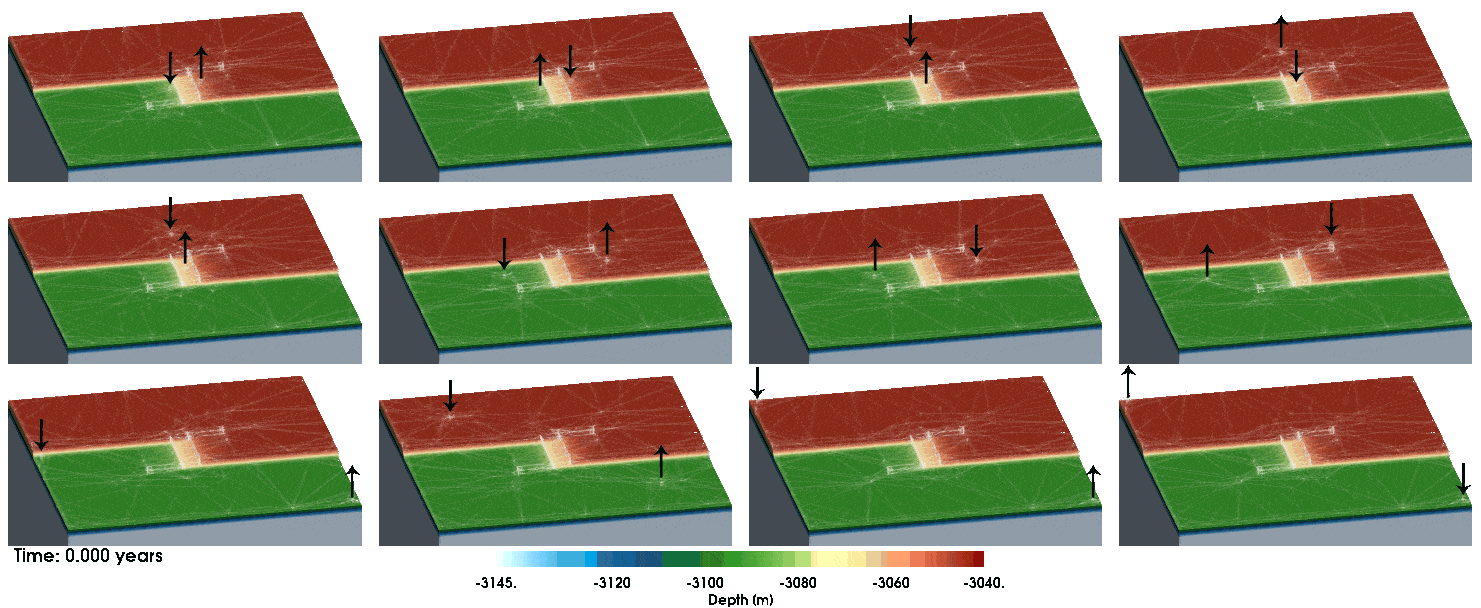
Preview of how Genetic Algorithms are being used to optimise geothermal well locations.Different geothermal well configurations are ranked by thermal breakthrough. In this case a geothermal doublet is positioned around a relay ramp in layered rocks. Dynamic mesh optimisation throughout simulations ensures the simulation mesh is always optimal for the well positions being tested without user intervention.
Geothermal reservoir with deviated wells
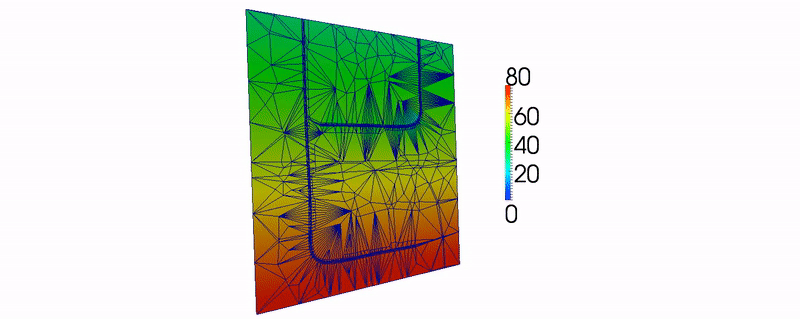
In this model a doublet of horizontal wells is considered in a geothermal reservoir. The well trajectory is captured by the mesh and not approximated. In this example the geothermal reservoir is modelled from the surface up to 5 km. The use of dynamic mesh optimisation enables us to easily span many lenght-scales without incurring in extra computational costs.
3D fingering
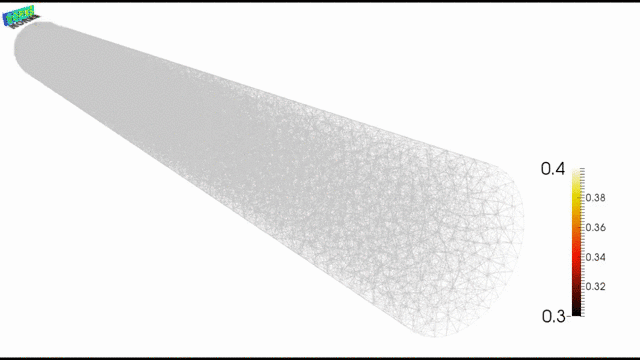
Immiscible porous media flow displacement of two fluids with a very high viscosity ratio, generating fingering.
3D Fractures
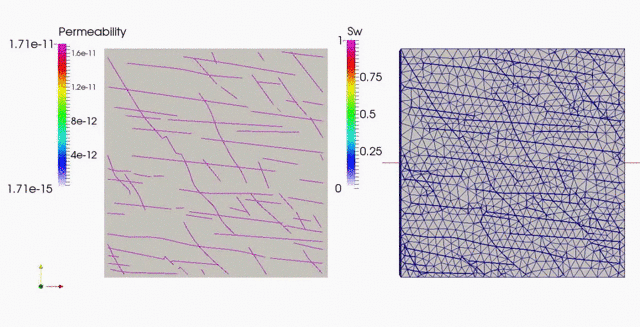
Immiscible porous media flow displacement in a fractured porous medium using dynamic mesh optimisation.
Saline intrusion
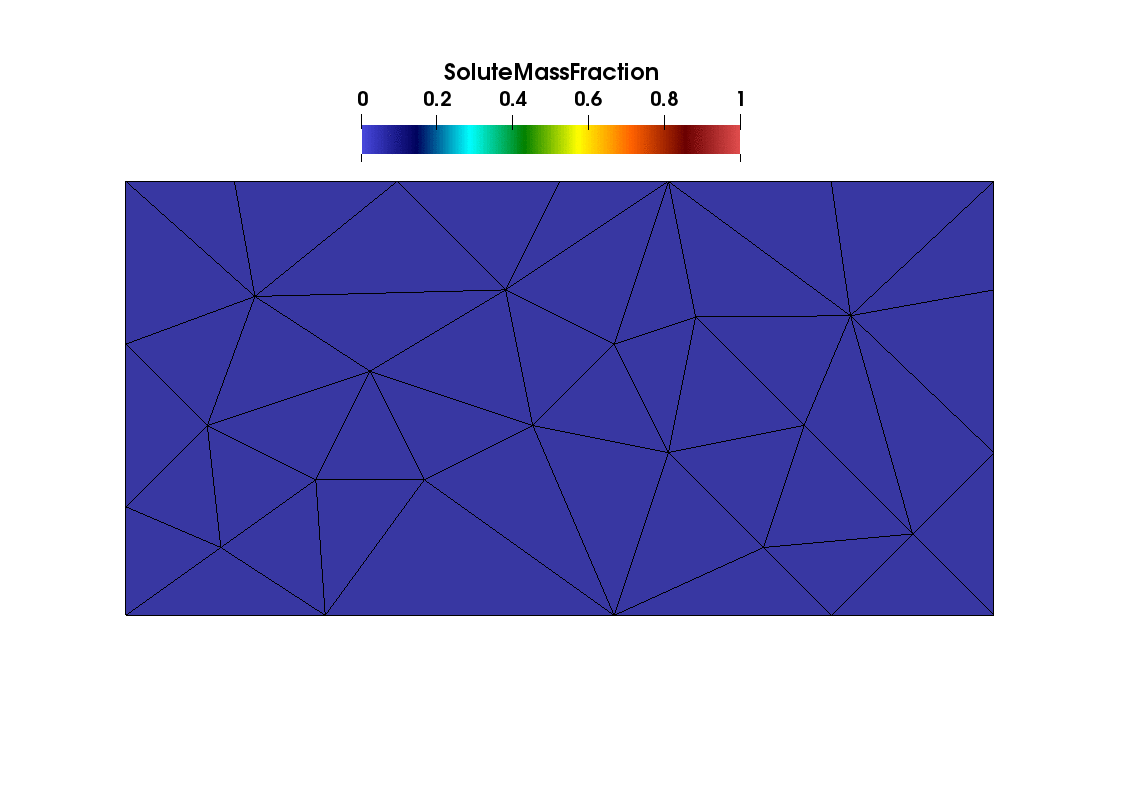
Example capturing the sea/fresh water interface in an aquifer.
Fractures growth
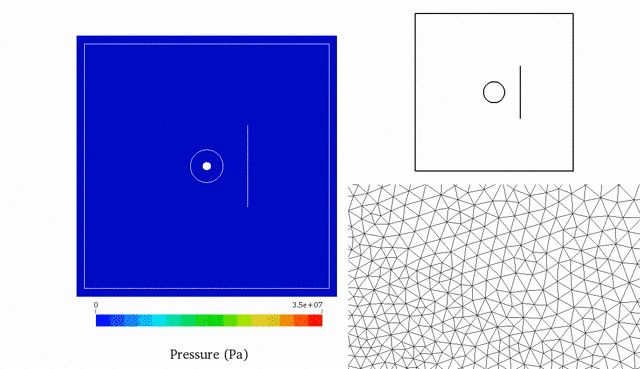
Example of the fluid-rock mechanics interaction, creation of fractures in a porous medium by increasing the pressure.
Inertia dominated flow simulations
Virus spread through droplets
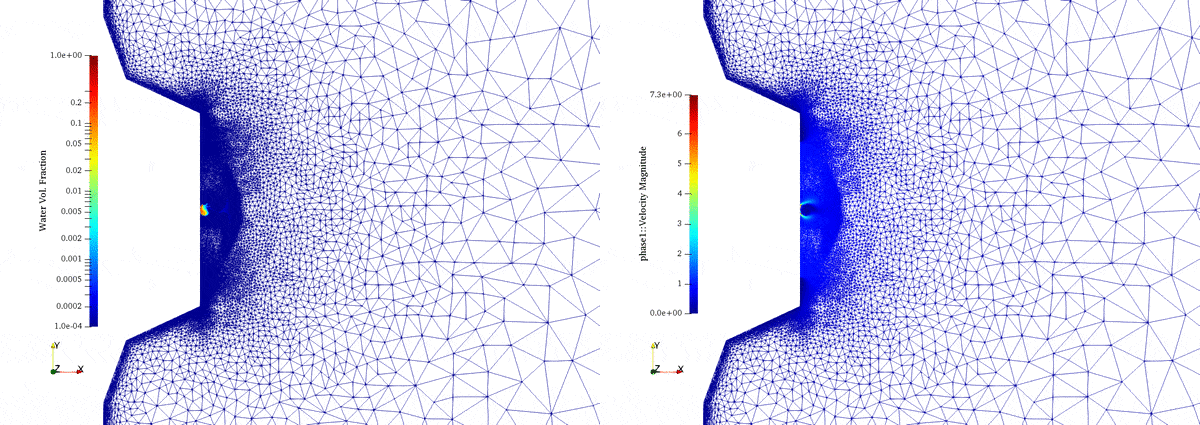
Droplet spread, with a precision of 100 microns, of a cough (0.026 seconds). As part of the project RAMP7. Left water saturation, right velocity.
Water splashing against an object

A column of water collapsing under its own weight impacting with an object.
Droplet impact
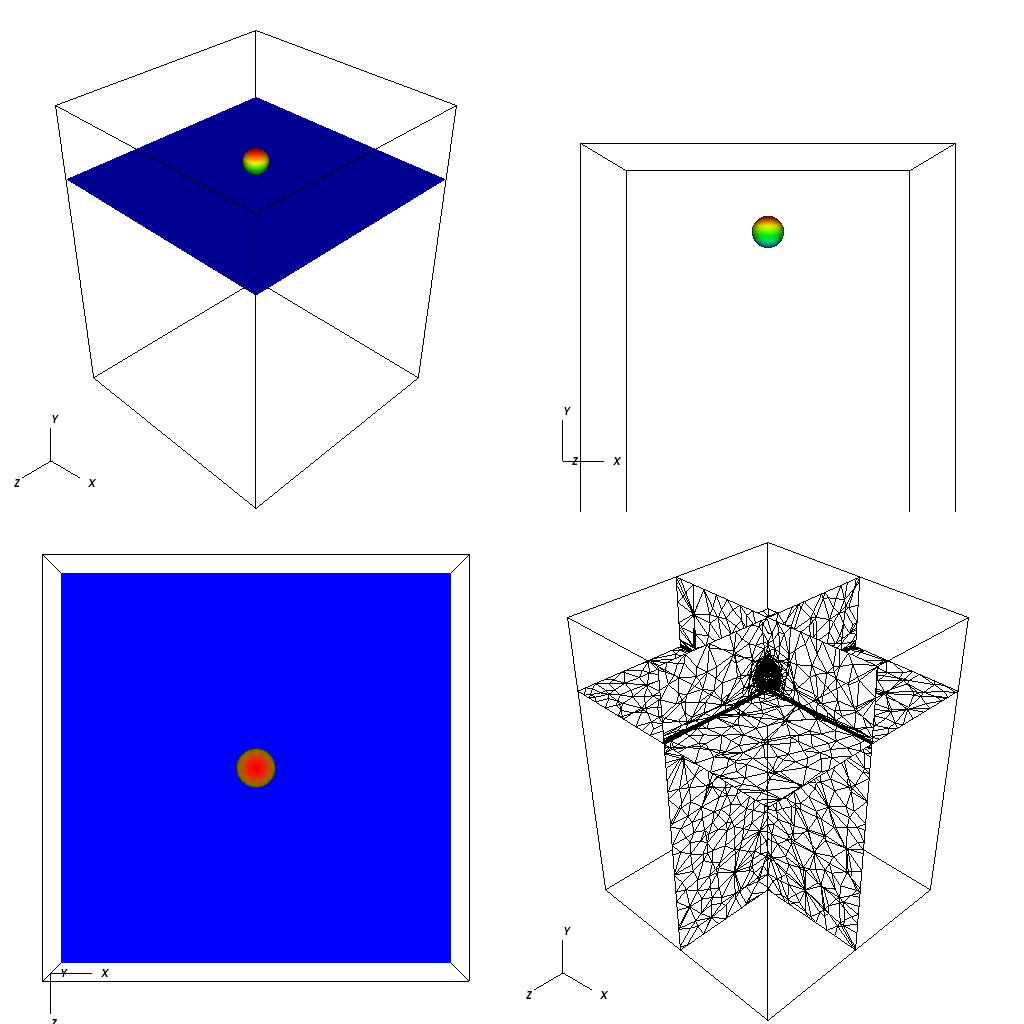
Three phase droplet impact (water) from a less viscous phase (air) to a more viscous phase (oil).
